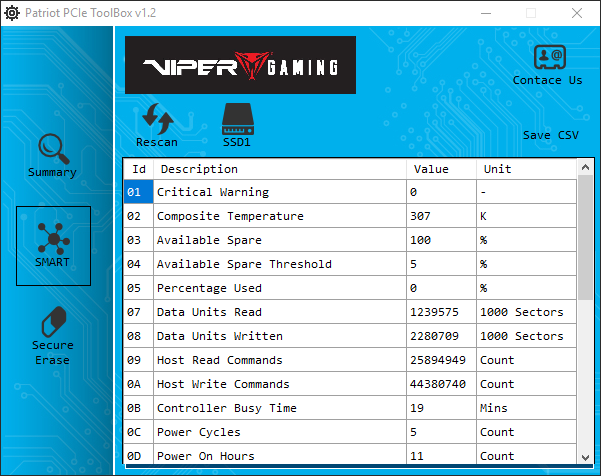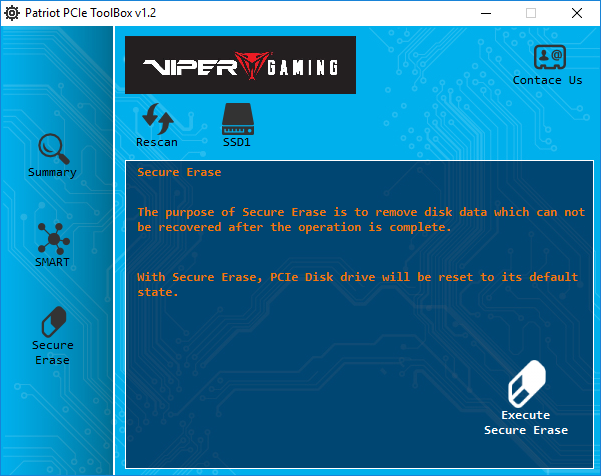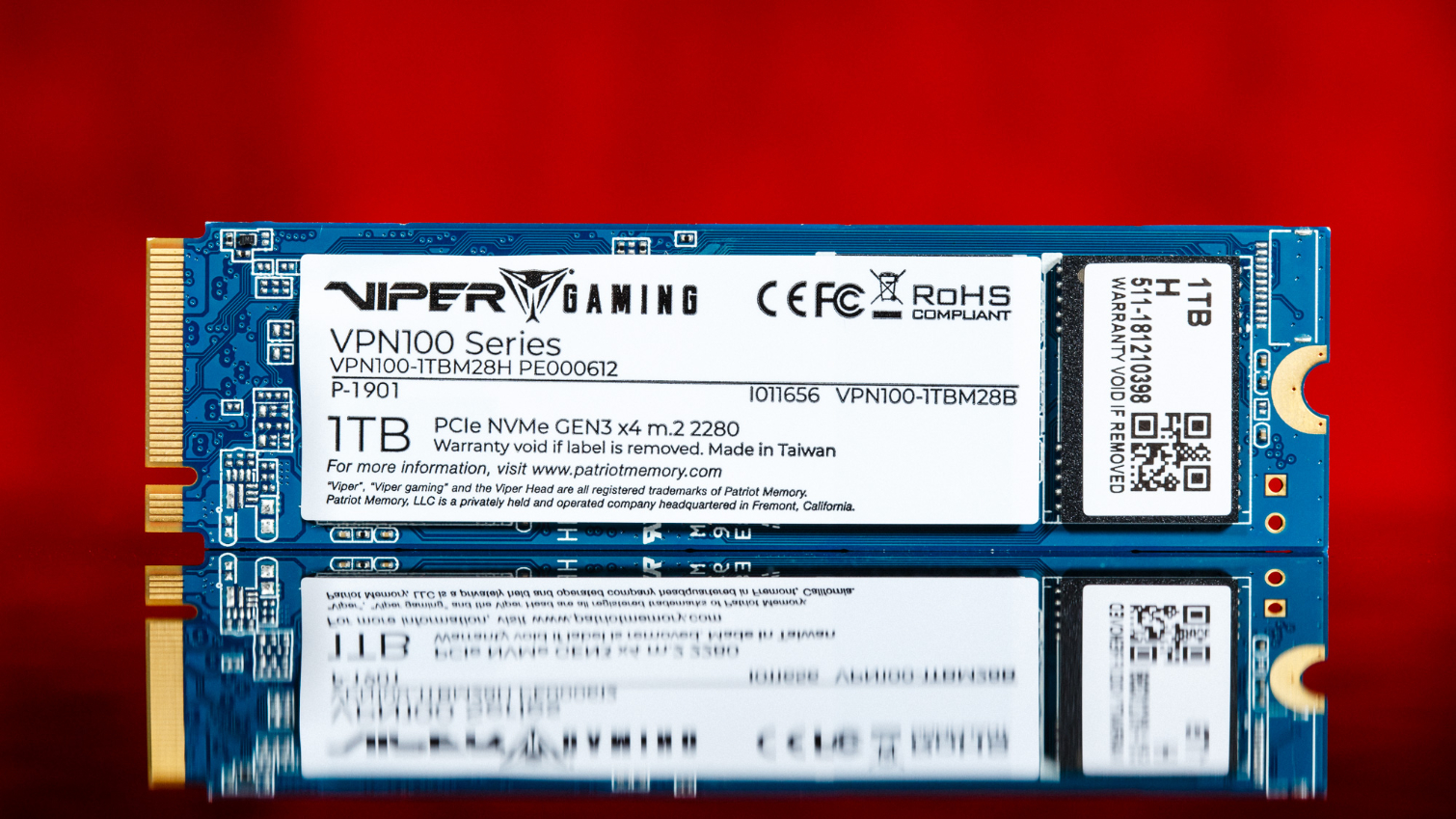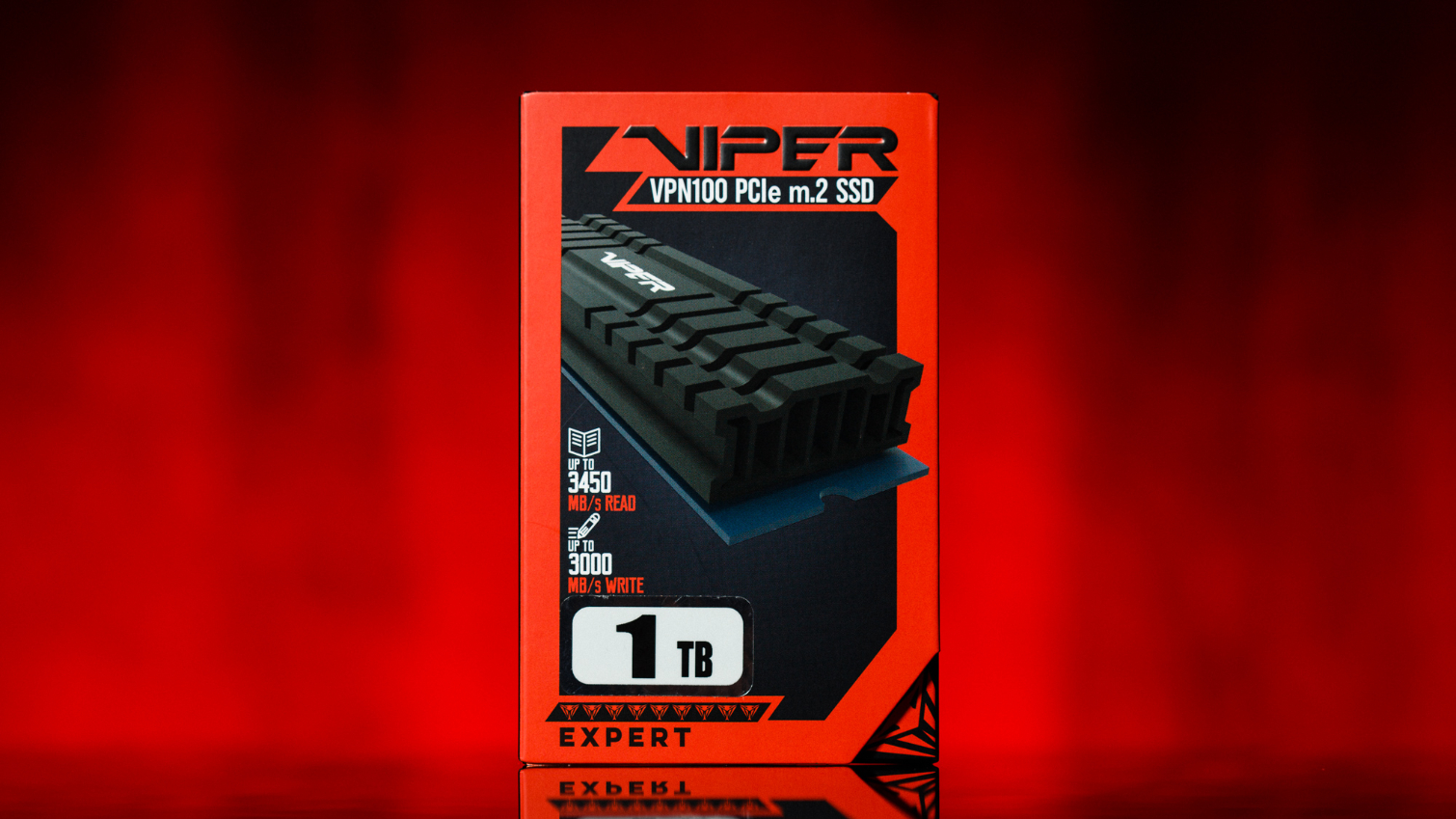Tom's Hardware Verdict
Looking for a fancy new M.2 SSD to throw into your build and don’t want that extra RGB bling, but want a heatsink to keep your drive cool? Though it isn’t a chart-topper, the Patriot Viper VPN100 has what it takes to compete with the best, and the write endurance to power through almost anything you can throw at it.
Pros
- +
Solid performance
- +
Stylish heatsink
- +
Up to 2TB of capacity
- +
High endurance rating
Cons
- -
Blue PCB
- -
Thermal pad doesn't mate with the controller
- -
three-year warranty
Why you can trust Tom's Hardware
Time to Get Tactical
Patriot's latest SSD comes with a powerful and proven design from Phison, an impressive heatsink, and write endurance to handle any task. The Viper VPN100 is ready for some of the most intense gaming or work sessions you can throw its way, and the aggressive heatsink keeps the drive cool while it delivers speeds up to 3.45/3.20 GB/s. Better yet, Patriot's pricing still undercuts other top-end competitors to make the Viper VPN100 a sweet value.
The Viper VPN100 is based on Phison’s reference design for SSDs with the E12 NVMe controller. The SSD comes paired with Toshiba’s BiCS3 64L TLC flash, so performance is close to other E12-powered SSDs we’ve taken a look at already, like the BPX Pro and Aorus RGB. Similar to the Aorus RGB, the VPN100 features an impressive heatsink but lacks the RGB shine. Instead, Patriot takes a more tactical approach to the design.
In contrast to the Aorus RGB’s blingy appearance, the VPN100 has a matte black aluminum heatsink with multiple fins and cuts. It’s more about cooling performance than looks here, though it might be attractive to FPS players as it does look strikingly similar to the actual tactical rail on a military weapon. And, if the big heatsink isn’t enough, the Viper VPN100 features an external thermal sensor to provide accurate thermal data to keep it, as the company states, “cool and healthy.”
Specifications
| Product | Patriot Viper VPN100 256GB | Patriot Viper VPN100 512TB | Patriot Viper VPN100 1TB | Patriot Viper VPN100 2TB |
| Pricing | $54.99 | $87.99 | $174.99 | $399.99 |
| Capacity (User / Raw) | 256GB / 256GB | 512GB / 512GB | 1024GB / 1024GB | 2048GB / 2048GB |
| Form Factor | M.2 2280 | M.2 2280 | M.2 2280 | M.2 2280 |
| Interface / Protocol | PCIe 3.0 x4 / NVMe 1.3 | PCIe 3.0 x4 / NVMe 1.3 | PCIe 3.0 x4 / NVMe 1.3 | PCIe 3.0 x4 / NVMe 1.3 |
| Controller | Phison E12 | Phison E12 | Phison E12 | Phison E12 |
| DRAM | SK Hynix DDR4 | SK Hynix DDR4 | SK Hynix DDR4 | SK Hynix DDR4 |
| NAND Flash | Toshiba BiCS 3 64L TLC | Toshiba BiCS 3 64L TLC | Toshiba BiCS 3 64L TLC | Toshiba BiCS 3 64L TLC |
| Sequential Read | 3,000 MB/s | 3,300 MB/s | 3,450 MB/s | 3,400 MB/s |
| Sequential Write | 1,000 MB/s | 2,200 MB/s | 3,000 MB/s | 3,200 MB/s |
| Random Read | 300,000 IOPS | 700,000 IOPS | 700,000 IOPS | 700,000 IOPS |
| Random Write | 250,000 IOPS | 480,000 IOPS | 700,000 IOPS | 700,000 IOPS |
| Encryption | N/A | N/A | N/A | N/A |
| Endurance | 380 TBW | 800 TBW | 1665 TBW | 3,115 TBW |
| Part Number | VPN100-256GM28H | VPN100-512GM28H | VPN100-1TBM28H | VPN100-2TBM28H |
| Warranty | 3-Years | 3-Years | 3-Years | 3-Years |
The Viper VPN100 comes in capacities ranging from 256GB to 2TB, but the 2TB variant isn't available yet. The 256GB model retails for $0.21 per GB, and the 512 and 1TB variants are a bit cheaper at $0.17 per GB, which is fairly competitive.
The drive delivers speeds of up to 3.45/3.2 GB/s of read/write throughput. Patriot also lists the Viper VPN100’s random read and write performance as up to 700K IOPS, but that is either based on a test system that isn’t patched with the Spectre and Meltdown mitigations, or just overzealous marketing.
In addition to its blisteringly fast speeds, the drive comes with a plentiful helping of write endurance up to 3.1 petabytes at the 2TB capacity. But while the endurance is class-leading, the warranty is not. While most established SSDs come with lengthy five-year warranties, the VPN100 comes with just a three-year warranty.
The Viper supports standard features like Trim, S.M.A.R.T. data monitoring, and Secure Erase.
Software and Accessories



Patriot enables product monitoring and firmware updates through its SSD Toolbox. Unfortunately, at the time of writing, it’s a bit hard to find on the company's website. In fact, it is actually mislabeled as a firmware download on the product page. If you manage to get the download, the SSD Toolbox will allow you to monitor the device’s S.M.A.R.T. data and update the firmware.
Additionally, you can Secure Erase the SSD even when it is in use as the active operating system drive. Be careful: The software will allow you to execute the command while the OS is running on the device. Once you execute the command, there’s no going back. The system will blue screen once the command goes through, and all the data will be lost forever. That's good for James Bond-type missions, we guess.
A Closer Look
Patriot’s Viper VPN100 comes in an M.2 2280 form factor and uses a PCIe 3.0 x4 link and the NVMe 1.3 protocol to communicate with the host. As we mentioned earlier, the drive features a Phison’s latest E12 NVMe controller and Toshiba BiCS3 64L TLC flash.








Our 1TB sample has four flash packages, two on each side of the PCB, and unlike the BPX Pro, the VPN100 doesn’t have much factory overprovisioning. That leads to an extra ~60GB of storage capacity after you format the drive in Windows. The drive also has two 512GB DDR4 DRAM packages for a total of 1GB for caching the device’s file translation layer.
Measuring in at 12mm at its thickest point, the heatsink is a bit thicker than the Gigabyte Aorus RGB’s and WD Black SN750’s. There are no clearance issues for graphics cards and other AICs when it is plugged into an onboard M.2 slot. The heatsink is bigger, but we found that the heatsink doesn’t fully touch the surface of the NVMe controller on our sample. Instead, the thicker NAND packages created a slight gap between the heatsink and the controller. While it may seem like a crucial mistake, temperatures mostly ranged within the 40’s while using the device, which is more than acceptable.
MORE: Best SSDs
MORE: How We Test HDDs And SSDs
MORE: All SSD Content

Sean is a Contributing Editor at Tom’s Hardware US, covering storage hardware.